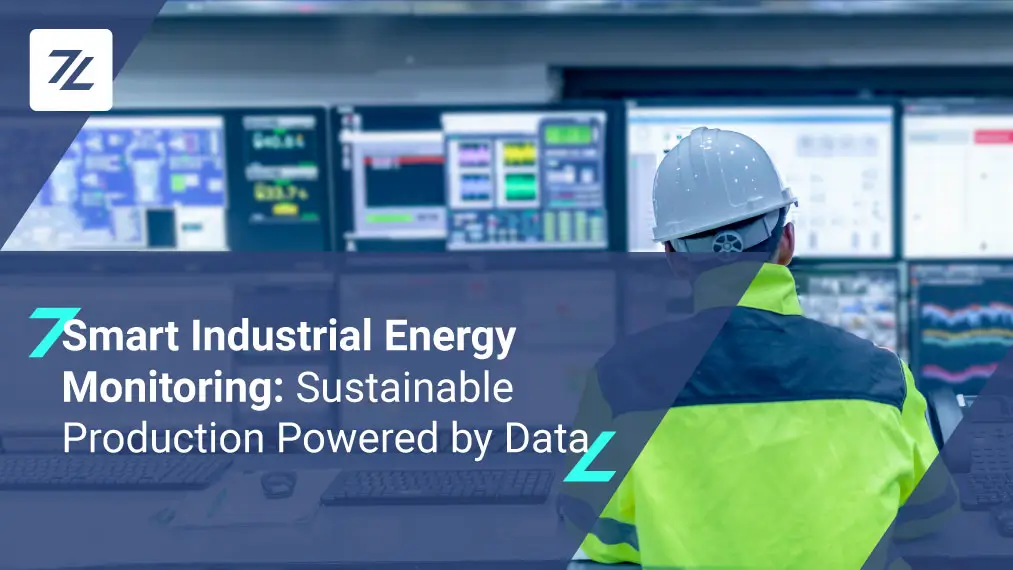Chat GPT is the most talked-about topic in recent months in the field of artificial intelligence, a Generative Artificial Intelligence tool capable of supporting human creative processes in many different areas of application and in many other sectors. Has the transition to Industry 5.0 just begun?
There still need to be more use cases of chatbots in Industry 4.0. What results could we get if these technologies were incorporated into everyday industrial operations?
We tried to play with Chat GPT and imagine the possible uses of generative artificial intelligence and how they could support IoT technologies in digitizing industrial processes.
Industry 4.0: digitization processes and production systems
Industry 4.0, also known as the fourth industrial revolution, represents a new era of production based on automation, digitization, and real-time connection of production systems.
One of the main drivers of this evolution is the growing data processing capacity and the increasing use of artificial intelligence algorithms capable of supporting humans in many everyday actions.
In this context, the Chat GPT language model represents a highly versatile and robust solution for automatic text generation, natural language understanding, code generation, and the creation of human-machine interfaces.
But how could it be used in Industry 4.0?
Generative Artificial Intelligence
Generative Artificial Intelligence is a machine learning system capable of classifying or recognizing existing data and generating content, such as text, images, or sound.
For example, some of the most popular Generative Artificial Intelligence software of 2022 are:
- Chat GPT for online searches, translations, and generating text or answers to questions
- Synthesia for creating videos
- SpeechText.AI for transforming video and audio into text format
- Dall-E 2 for images
- HourOne for video and audio creation from text
- Midjourney image creation
In recent years, various studies in the field of training artificial neural networks are leading to an increasing understanding of different fields of application.
The current benchmark is OpenAI’s Chat GPT. This state-of-the-art chatbot has initiated a wave of astonishing ‘language imitations.’
It has been enjoying great success in recent weeks, not only in autonomous text generation but also in creating intelligent chatbots that understand and naturally answer users’ questions, perform sentiment analysis of text expressions, support marketing applications, or even generate code in specific programming languages from particular user requests.
According to various studies, 2023 will be the year of artificial intelligence and the application of increasingly sophisticated language models. Although Chat GPT is the most widely used trend of the moment, GPT-4 is already being launched and implemented in many researches and applications.
If we used Chat GPT in Industry 4.0
What would happen if we used Chat GPT in Industry 4.0? With the ability to understand and process data, these tools could be handy for the following:
- Predicting problems: if trained on historical data, it could implement and suggest predictive maintenance actions to anticipate issues and generate recommendations for improved safety.
- Data monitoring: to analyze data collected from sensors and actuators on machines and plants, identify anomalies and generate alarms.
- Production assistance: to create a chatbot that can help operators at the machine in case of difficulties or questions about machines or processes.
- Automatic documentation generation: automatically generating technical documentation on production processes, maintenance, or safety.
- Human Machine Interface: to create natural dialogue interfaces for machine management and control to simplify operators’ interaction with technology.
The ease and immediacy of artificial intelligence solutions, if combined with an intuitive user experience, allow production processes to be optimized, reduce machine downtime, and increase machine reliability.
But is the Italian industry ready to move to Artificial Intelligence? Are we prepared for Industry 5.0?
Zerynth Dashboard on Chat GPT
We asked Chat GPT how it can read a Zerynth dashboard (Fig1, Fig2) and read one of our Dashboards with Productivity View (Fig 3,4).
Here are the answers!
Fig, 1 How chat GPT can read a dashboard
Fig. 2 Chat GPT reads a Zerynth’s dashboard
Fig. 3 Zerynth’s Dashboard with “Productivity” view
Fig. 4 Chat GPT reads the Zerynth’s dashboard “Productivity”
Simply by feeding it a link to a Zerynth dashboard, the generative artificial intelligence can immediately read the data and graphs, providing an overview of what is happening in real-time. Astonishing!
The accuracy and precision of the information depend, of course, on the type of data fed to the artificial intelligence and the kind of visibility and protection that dashboard itself has.
But the result, although superficial, is beneficial in an initial analysis to understand how the factory is performing, which machines are performing best, and which parameters would be best observed with more precision.
2023 is the year of artificial intelligence and Industry 5.0
The results are surprising: is this the first step toward a complete transition to Industry 5.0? Most of Italy’s machine park still has working but underperforming machinery, with an average age of around 20 years.
Despite the incentives of the Transition 4.0 plan, PNRR, and tax credit, many companies still need to be ready for Industry 4.0. The high interest in artificial intelligence technologies still needs a concrete implementation of 5.0.
Italy is investing in new technologies, especially in integrating IoT, Artificial Intelligence, Advanced Robotics, and Automation.
The challenges mainly concern the lack of digital skills and investment in digital infrastructure, the main stumbling blocks to overcome for a complete digital transition in the industry.
Chat GPT-4 is the next innovation to be launched on the market and explored in its many uses. The world of research and experimenters can’t wait to observe its potential and, perhaps, its concrete applications in the industrial sphere. We should wait longer.
Share This Story, Choose Your Platform!
Follow Zerynth on
Latest Posts









